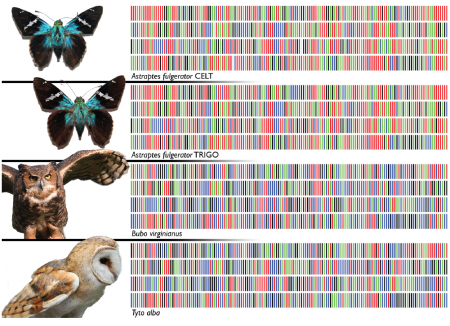
DNA barcoding is now part of the United Nations strategic plan for enhancing and protecting biodiversity.
Supporting DNA barcoding was among the recommendations made this week during the UN’s Biodiversity Conference in Cancun, Mexico. Representatives from 196 countries attended the 13th conference of the Parties to the Convention on Biological Diversity (CBD).
“This is a huge milestone for the University of Guelph and science in Canada,” said Malcolm Campbell, vice-president (research).
“Because of the visionary work of U of G researchers, DNA barcoding has changed the way we look at life on this planet. The UN’s recognition is a testament to its effectiveness and the important role it plays in protecting the world’s biodiversity.”
An international agreement, the CBD stresses the need to conserve biological diversity and share benefits from use of genetic resources. The agreement was adopted at the UN’s Earth Summit in 1992, and is now one of the most widely ratified international treaties on environmental issues.
During the Cancun conference, DNA barcoding was identified as key to implementing a strategic plan for biodiversity.
The decision ratified Dec. 17 calls for international support for DNA barcoding, the International Barcode of Life Network (iBOL), the Global Taxonomy Initiative and other DNA barcoding applications.
“It’s a crowning achievement,” said Mario Thomas, chief executive officer of the U of G-based Biodiversity Institute of Ontario (BIO).
“It’s not every month or even every year that we see the UN endorsing a technology that was developed here in Canada and recommending its use to the world.”

Thomas added the decision honours 12 years of scientific leadership by U of G professor Paul Hebert. Hebert was the first scientist to propose that a short DNA sequence be used to identify species. He called the system DNA barcoding, analogous to how retail products are tagged to allow for quick identification.
With DNA barcoding, scientists may identify species within hours – and, ultimately, minutes – using all life stages and even fragments of organisms.
Since 2003, Hebert and his research team have honed the novel technique into a multifaceted international research program.
DNA barcodes are now available for more than 500,000 species and five million individual plants, animals and fungi.
“We are delighted that the Parties to the Convention have endorsed the important role that DNA barcoding can play in helping to protect the millions of species which share our planet,” Hebert said.
Barcoding has led to the discovery of hundreds of overlooked species. It’s also been used to identify products in the marketplace, correct mislabelled foods and natural health products, improve environmental monitoring and diagnostics for water and soil quality, and measure environmental impacts of human activities.
 More than 100 scientists and technicians and 30 graduate students work at BIO and its Centre for Biodiversity Genomics.
More than 100 scientists and technicians and 30 graduate students work at BIO and its Centre for Biodiversity Genomics.
U of G is also home to iBOL, the largest biodiversity genomics initiative ever undertaken in the world. It involves more than 1,000 researchers in 26 countries developing a DNA barcode reference library and new informatics tools and technologies.
In 2010, iBOL was adopted as a formal collaborative program at the 10th conference of the Parties to the CBD in Nagoya, Japan. Since then, the CBD Secretariat, which is based in Montreal, has coordinated resources for DNA barcode training for senior biodiversity scientists around the world.